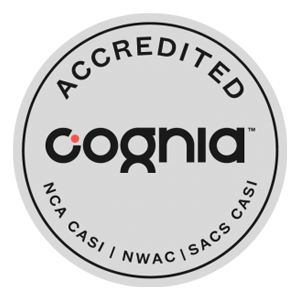Strengthening U.S. Market Presence Amid Shifting Trade Policies: A Comprehensive Guide for Businesses
Introduction
In today’s rapidly evolving global economy, businesses face the challenge of strengthening their U.S. market presence while navigating the complexities of shifting trade policies. This comprehensive guide explores strategies and tactics for companies to not only survive but thrive in an environment where trade regulations, tariffs, and international relations are in constant flux. By understanding the intricacies of trade policies and implementing robust strategies, businesses can position themselves for success in the U.S. market.
Understanding the Impact of Shifting Trade Policies
Shifting trade policies have far-reaching implications for businesses operating in or seeking to enter the U.S. market. These changes can affect everything from supply chain management to consumer behavior. To strengthen their U.S. market presence, companies must first grasp the full scope of how trade policies influence their operations.
Trade policies directly impact tariffs, which in turn affect product pricing and profit margins. As tariffs fluctuate, businesses may need to reassess their pricing strategies to remain competitive while maintaining profitability. Moreover, changes in trade agreements can open up new opportunities or create barriers in certain sectors, necessitating a flexible and adaptive approach to market strategy.
To effectively navigate this landscape, businesses should conduct a comprehensive risk assessment of current and potential trade policies. This assessment should consider both short-term impacts and long-term trends, allowing companies to make informed decisions about their U.S. market strategies.
Diversifying Supply Chains for Resilience
One of the key strategies for strengthening U.S. market presence amid shifting trade policies is to diversify supply chains. Reliance on a single source region can leave businesses vulnerable to policy changes, geopolitical tensions, or unforeseen disruptions. By diversifying supply chains, companies can reduce their exposure to risk and enhance their ability to adapt to changing circumstances.
To implement this strategy, businesses should:
- Identify alternative suppliers in different regions
- Assess the viability of nearshoring or reshoring certain operations
- Develop relationships with multiple logistics providers
- Invest in technology that enables greater supply chain visibility and agility
Diversification not only helps mitigate risks associated with shifting trade policies but also can lead to improved efficiency and cost savings in the long run. By having multiple options for sourcing and distribution, businesses can quickly pivot when faced with new tariffs or trade restrictions, maintaining their competitive edge in the U.S. market.
Analyzing Tariff Impacts on Product Pricing and Profit Margins
A critical aspect of strengthening U.S. market presence is understanding and adapting to the impact of tariffs on product pricing and profit margins. Tariffs can significantly affect the cost structure of imported goods, potentially eroding profit margins if not properly managed. Businesses must conduct thorough analyses to determine how tariffs influence their bottom line and develop strategies to mitigate negative impacts.
To effectively analyze tariff impacts, companies should:
- Regularly monitor changes in tariff rates for relevant product categories
- Develop pricing models that account for various tariff scenarios
- Assess the elasticity of demand for their products to understand how price changes may affect sales volume
- Explore opportunities for cost-saving in other areas of the business to offset tariff-related expenses
By maintaining a clear understanding of tariff impacts, businesses can make informed decisions about pricing strategies, product mix, and market focus. This analysis may reveal opportunities to adjust product offerings or explore new market segments that are less affected by current trade policies.
Exploring Domestic Manufacturing and Assembly Options
As trade policies shift, many businesses are reconsidering their manufacturing and assembly strategies. Exploring domestic options can be an effective way to mitigate tariff exposure and strengthen U.S. market presence. While domestic production may have higher labor costs, it can offer advantages in terms of reduced shipping times, lower tariff burdens, and improved perception among U.S. consumers.
When considering domestic manufacturing or assembly, businesses should:
- Conduct a cost-benefit analysis comparing domestic and overseas production
- Investigate available tax incentives or grants for domestic manufacturing
- Assess the availability of skilled labor and necessary infrastructure
- Consider the marketing value of “Made in USA” labeling
By bringing production closer to the U.S. market, companies can gain greater control over their supply chains and reduce vulnerability to international trade policy fluctuations. This approach can also lead to faster response times to market demands and improved quality control.
Investing in Market Intelligence and Policy Monitoring
To strengthen U.S. market presence amid shifting trade policies, businesses must stay ahead of the curve by investing in market intelligence and policy monitoring. This proactive approach enables companies to anticipate policy changes, understand emerging consumer trends, and make strategic decisions based on accurate and timely information.
Effective market intelligence and policy monitoring strategies include:
- Subscribing to industry-specific news services and policy updates
- Engaging with trade associations and advocacy groups
- Utilizing data analytics to identify market trends and consumer behavior patterns
- Developing relationships with government affairs specialists or consultants
By staying informed about potential policy shifts and market dynamics, businesses can position themselves to quickly adapt their strategies and capitalize on new opportunities. This knowledge also allows companies to contribute to policy discussions and potentially influence outcomes that affect their industries.
Developing Flexible Distribution Strategies
As trade policies evolve, so too must distribution strategies. Developing flexible distribution approaches is crucial for businesses looking to strengthen their U.S. market presence. This flexibility allows companies to adapt to changing trade routes, tariff structures, and market conditions without significant disruption to their operations.
To create flexible distribution strategies, businesses should consider:
- Establishing multiple distribution centers across different regions
- Partnering with third-party logistics providers for scalable solutions
- Implementing advanced inventory management systems
- Exploring direct-to-consumer channels to complement traditional retail distribution
By developing adaptable distribution networks, companies can more easily navigate the challenges posed by shifting trade policies. This flexibility can lead to improved customer service, reduced lead times, and the ability to quickly enter new markets or adjust to policy-driven changes in existing ones.
Strengthening Relationships with Key Stakeholders and Policymakers
In an environment of shifting trade policies, building and maintaining strong relationships with key stakeholders and policymakers is essential for businesses aiming to strengthen their U.S. market presence. These relationships can provide valuable insights, influence policy decisions, and create opportunities for collaboration and growth.
Strategies for strengthening these relationships include:
- Actively participating in industry associations and trade groups
- Engaging in public-private partnerships
- Establishing open lines of communication with local and federal government representatives
- Contributing to policy discussions through white papers, testimonies, or advisory roles
By fostering these relationships, businesses can gain a voice in shaping policies that affect their industries. Additionally, strong connections with stakeholders can lead to early awareness of potential policy changes, allowing companies to prepare and adapt more effectively.
Investigating Free Trade Zones and Tariff Reduction Programs
To strengthen U.S. market presence amid shifting trade policies, businesses should explore opportunities presented by free trade zones (FTZs) and tariff reduction programs. These initiatives can offer significant advantages in terms of cost savings, improved cash flow, and enhanced competitiveness in the U.S. market.
Key considerations when investigating these options include:
- Understanding the specific benefits and requirements of FTZs
- Evaluating the potential for duty deferral, reduction, or elimination
- Assessing the impact on supply chain efficiency and inventory management
- Exploring specialized tariff reduction programs relevant to specific industries or product categories
By leveraging FTZs and tariff reduction programs, businesses can potentially offset some of the negative impacts of shifting trade policies. These strategies can provide a competitive edge by reducing costs and streamlining operations within the U.S. market.
Exploring Strategic Partnerships to Enhance Market Access
In the face of shifting trade policies, strategic partnerships can play a crucial role in strengthening U.S. market presence. Collaborating with local businesses, distributors, or even competitors can provide valuable market access, local knowledge, and shared resources to navigate complex trade environments.
When exploring strategic partnerships, businesses should:
- Identify potential partners with complementary strengths or market positions
- Assess cultural fit and alignment of business objectives
- Develop clear agreements on roles, responsibilities, and benefit-sharing
- Consider joint ventures, licensing agreements, or distribution partnerships
Strategic partnerships can help businesses quickly adapt to new market conditions, share risks associated with policy changes, and leverage combined expertise to seize opportunities. These collaborations can be particularly beneficial for companies looking to enter new segments of the U.S. market or expand their existing presence.
Implementing Scenario Planning for Trade Policy Outcomes
To effectively strengthen U.S. market presence amid shifting trade policies, businesses must be prepared for various potential outcomes. Implementing robust scenario planning allows companies to anticipate different policy scenarios and develop strategies to respond quickly and effectively to changes in the trade landscape.
Effective scenario planning involves:
- Identifying key uncertainties and potential policy shifts
- Developing multiple scenarios based on different policy outcomes
- Creating action plans for each scenario
- Regularly reviewing and updating scenarios as new information becomes available
By engaging in comprehensive scenario planning, businesses can improve their agility and resilience in the face of shifting trade policies. This proactive approach enables companies to make informed decisions quickly, potentially gaining a competitive advantage in the U.S. market.
Conclusion
Strengthening U.S. market presence amid shifting trade policies requires a multifaceted approach that combines strategic planning, operational flexibility, and proactive engagement with stakeholders. By implementing the strategies outlined in this guide, businesses can position themselves to not only weather the challenges posed by changing trade policies but also to thrive in the dynamic U.S. market.
Key takeaways for businesses looking to strengthen their U.S. market presence include:
- Continuously assess and adapt to the impact of trade policies on operations and strategy
- Diversify supply chains and explore domestic production options to mitigate risks
- Invest in market intelligence and maintain strong relationships with key stakeholders
- Develop flexible distribution strategies and explore strategic partnerships
- Utilize scenario planning to prepare for various trade policy outcomes
By embracing these strategies and maintaining a proactive stance, businesses can navigate the complexities of shifting trade policies and build a strong, resilient presence in the U.S. market. As the global trade landscape continues to evolve, those companies that remain adaptable and forward-thinking will be best positioned to capitalize on new opportunities and achieve long-term success.























